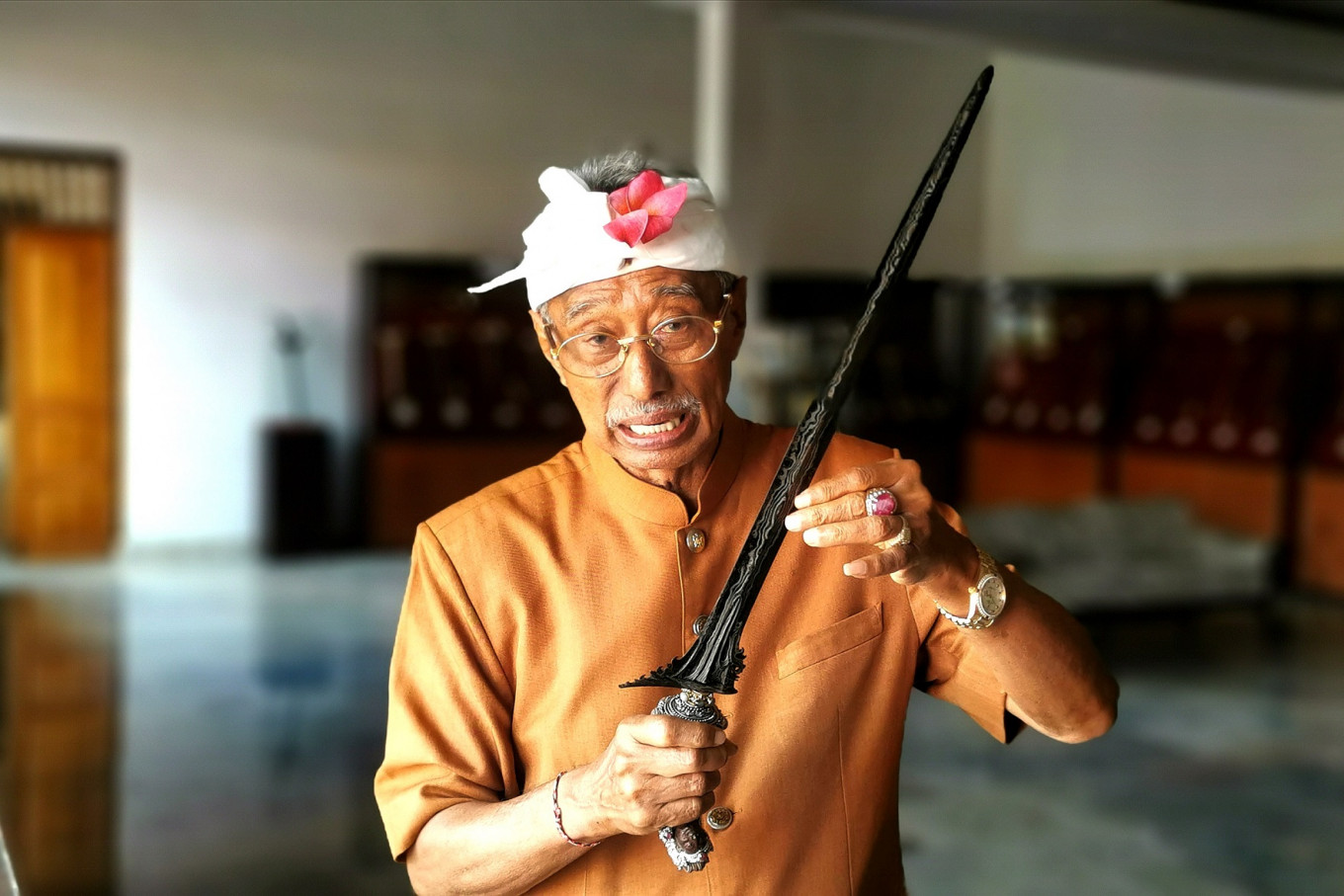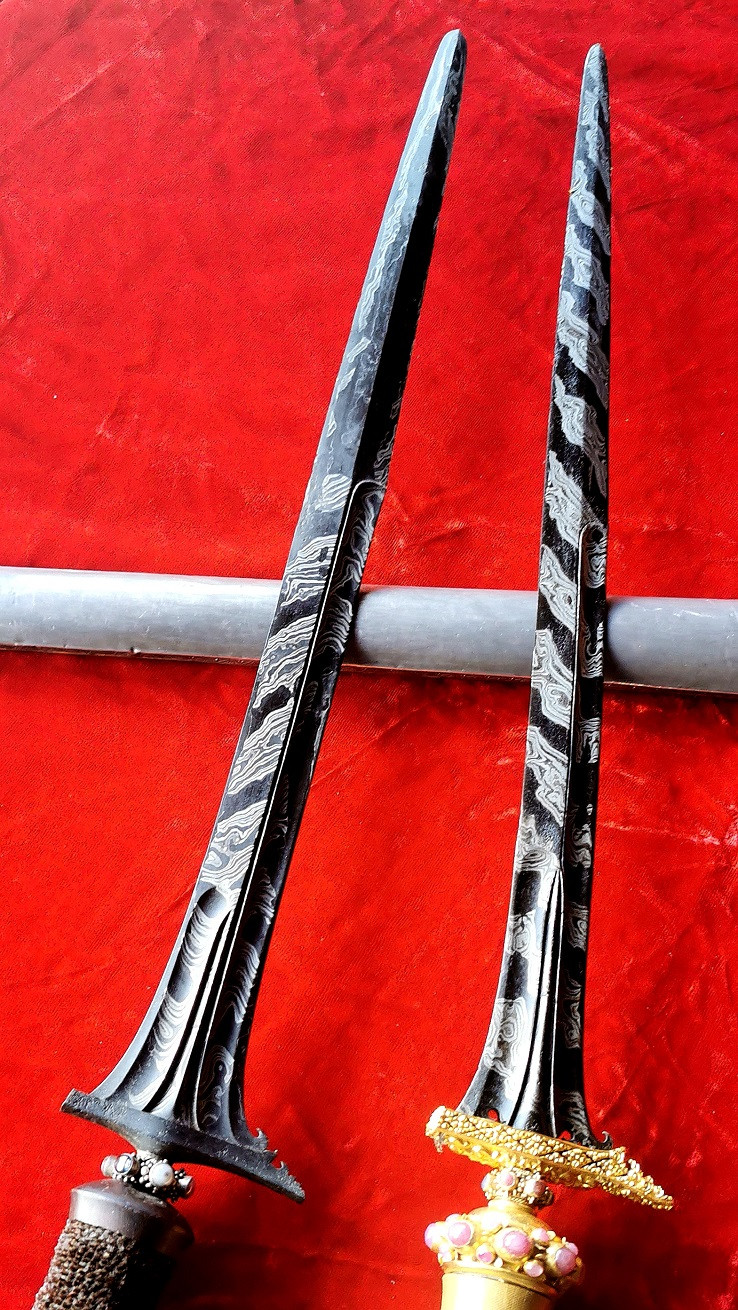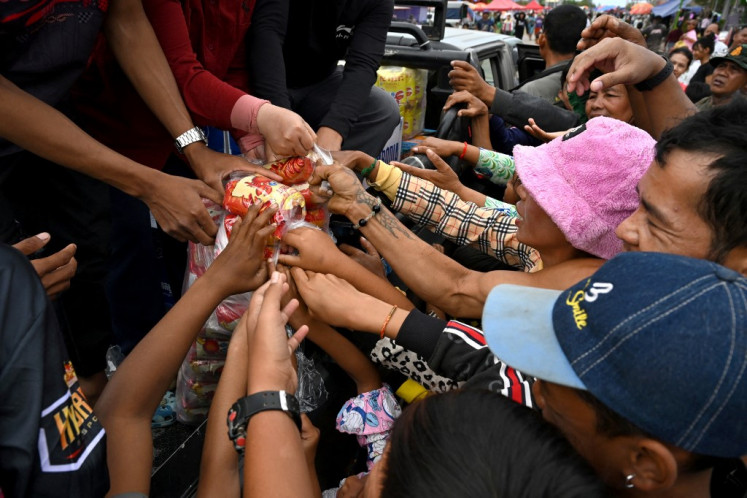Popular Reads
Top Results
Can't find what you're looking for?
View all search resultsPopular Reads
Top Results
Can't find what you're looking for?
View all search resultsNeka’s legacy of kris beauty
Change text size
Gift Premium Articles
to Anyone
A Balinese art connoisseur finds his passion in preserving the legacy of his kris-making ancestors.
The sprawling compound of the Neka Art Museum (NAM) in Bali's Ubud subdistrict was hauntingly quiet one Thursday morning.
The COVID-19 pandemic is ravaging throughout the island, forcing nearly all public institutions and tourist facilities, the museum included, to close down. Only four employees were seen on the first floor of the 1-hectare complex.
The empty parking lot, the deserted pavilions that house paintings and sculptures of some of Indonesia's and most of Bali's illustrious artists, and the overall somber atmosphere evoked a sense of paralyzing desperation.
A sense that a growing number of Balinese people has become familiar with after witnessing how in just a mere three-month period, the deadly pandemic has crushed the tourism industry – the island's economic backbone for half a century.
Currently, NAM houses more than 400 paintings and sculptures representing various esthetic periods of the island. It also showcases works of Indonesian and foreign artists, who were inspired or influenced by the island's landscape and culture.
The museum founder, 81-year-old Pande Wayan Sutedja Neka, is the son of the late Balinese master carver I Wayan Neka. The establishment of the museum, the island’s first privately owned museum, 38 years ago was Neka’s tribute to his late father and it was also born out of his concern that the future generation would not have an opportunity to gaze at the masterpieces created by their own predecessors.
A former elementary school teacher turned wealthy art connoisseur, Neka opened one of Ubud's first art galleries in 1966. Soon it became a hub for serious collectors and prominent artists. Some of them, including legendary figures, such as Affandi, Dullah, Hendra Gunawan and Srihadi Soedarsono, later became Neka's family friends.
"My late wife was the staunchest supporter of this museum. She reminded me that we need to have a museum so as our sons and grandsons would be able to see firsthand the works of our maestros instead of learning about them from books," Neka said.
In the mid 2000s, Neka shifted his attention to the kris (traditional asymmetrical dagger with a distinctive blade-patterning).
Neka spent most of that decade traveling across the island and to Java –considered Indonesia's kris heartland – to build the collection for NAM's Kris Hall as well as to acquaint himself with notable mpu (kris-makers) and scholars.
The experience brought him a deeper understanding of the historical wavy dagger commonly known as the stabbing weapon of choice among the warriors of the archipelago.
The unique forging method – layers of different iron ores, nickel and meteorites hammered and folded up to hundreds of times – and the intricate rituals involved clearly shows that a kris is more than just a murderous tool.
"The dhapur [shape and design of the blade], the pamor [decorative pattern of nickel alloy on the blade], the complex carving on the ganja [guard] and danganan [hilt], as well as on the warangka [sheath] prove that a kris is definitely a work of art," he said, while wielding one of NAM's most prized collections.
It was a straight blade kris named Ki Baju Rante for its ability to pierce through baju rante [chain mail]. It was crafted in the 18th century by Mpu Pande Rudaya, the royal blacksmith for the Karangasem king. It was said that the kris played an important role in the military annexation of the neighboring Lombok island by Karangasem warriors.
Neka pointed at the pamor of the kris, whispering that the pamor was what made Ki Baju Rante so special. Generally, there are two kinds of pamor: pamor rekan (decorative pattern designed by the kris maker) and pamor tiban (decorative pattern that is formed naturally after layers of metal are hammered and folded multiple times).
Twin beauty: Ki Baju Rante (left) and Ki Baru Kumandang (right) share a similar shape, design as well as decorative pattern of nickel alloy. The 'pamor' is Iris Pandan (sliced pandanus leaves). (JP/I Wayan Juniarta)Uniquely, Ki Baju Rante possesses both of them. One side of the blade shows a decorative nickel alloy pattern called iris pandan (sliced pandanus leaves), which is pamor rekan, while the other side shows ilining warih (water flow), which is pamor tiban.
"How the kris-maker was able to create these two different pamor on a single blade is beyond me," he said.
Ki Baju Rante is one of around 27 heirloom krisses in the NAM collection. They were all presented to the museum by the descendants of kings and venerated mpu from across the island, a testament to the trust they have over the museum's missions.
The collection also comprises 100 historical and antiquated krisses as well as 200 krisses of Tangguh Kamardikan (post-independence period).
Dressed in Balinese attire with a white cloth headdress in the center of the Kris Hall on the second floor of NAM, Neka explained that his interests in kris was spurred by a realization of his swadharma (self-obligation) as the descendant of a master kris maker and as a member of the Pande (blacksmith) clan.
The swadharma is very important in Bali, providing the Balinese with a sense of connection with their ancestors, which in turn gives rise to clan-based organization and sometimes an unhealthy dose of clan pride. In most cases, it motivates them to honor their ancestors by following in their footsteps.
"One of my ancestors is Pande Pan Nedeng, the royal blacksmith for the court of Ida I Dewa Agung Djelantik, the 19th century king of Peliatan. I want to honor his memory by preserving the legacy of the kris and kris-makers," Neka said
"A kris represents the three most important deities of Balinese Hinduism. The heat of the forge turns metal into a reddish, moldable slab. Red is the color of Brahma, the Lord of Creation. Iron, the main material, is black, the color of Wisnu, the Lord of Sustenance. The nickel steel, the material for the blade's decorative pattern, is white, the color of Siwa, the Lord of Destruction," he added.
Neka’s voice was passionate and his eyes glittered with enthusiasm as he explained about the kris. That sense of desperation could not touch him, for he is a fighter.
He has witnessed a political tragedy unfold in 1965, survived the catastrophic economic and political crisis of 1998 and experienced firsthand the sorrow brought by the demise of loved ones; his best friend the Dutch painter Arie Smit in 2016 and his wife of 55 years, Ni Gusti Made Srimin, in 2018.
"Life is always about creation, sustenance and destruction. Birth and death, joy and sorrow, health and disease, are the essential part of that cycle. Our duty is to embrace them all by steadfastly carrying out our karma [action, deed] in accordance with dharma [the Truth]," he said.
That wisdom of equanimity, he acknowledged, was one of the most important lessons he gained after decades of studying and collecting kris.
In 2005, UNESCO honored the kris as a Masterpiece of the Oral and Intangible Heritage of Humanity. In 2009, Mahasemaya Warga Pande, the clan-based organization for the descendants of the island's blacksmiths, honored Neka with the title Jejeneng Mpu Kris (venerated kris-maker). Yet, his work is far from over.
He sees the pandemic period, during which attendance to the museum has fallen from 6,000 people per month to zero, as an opportunity to revamp the Kris Hall. The collection is now arranged into two separate rooms, new display cabinets are being constructed and multimedia visualization tools and content are being built.
"The two edges of the kris' blade symbolize sidi [power] and sida [capability], while its pointed tip represents sadu [wisdom and peace]. I hope that through this Kris Hall, our youngsters can learn those three functions of a kris: a powerful weapon, a medium for artistic capability and a symbolic reminder of our quest for wisdom and peace," he said.













